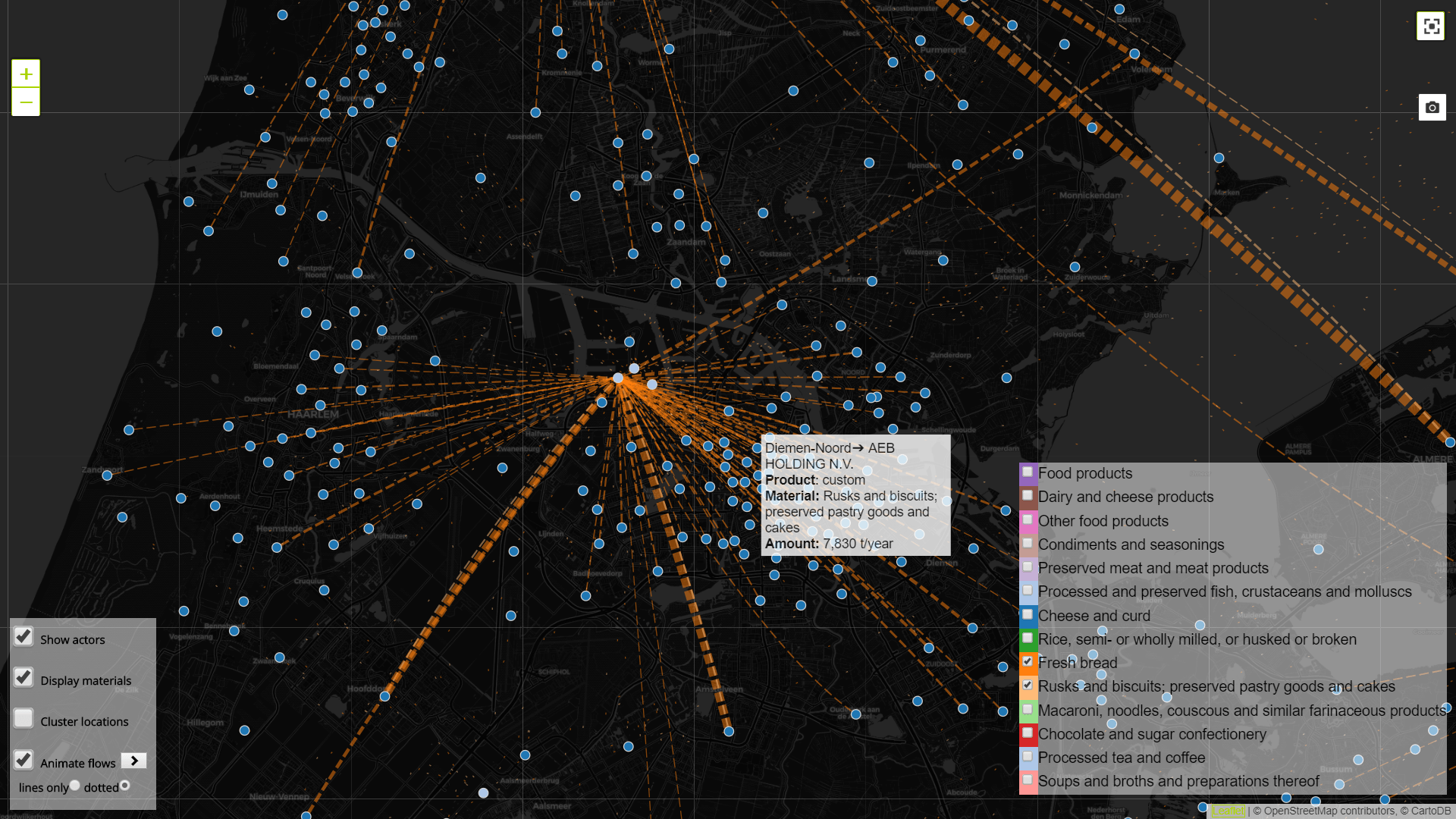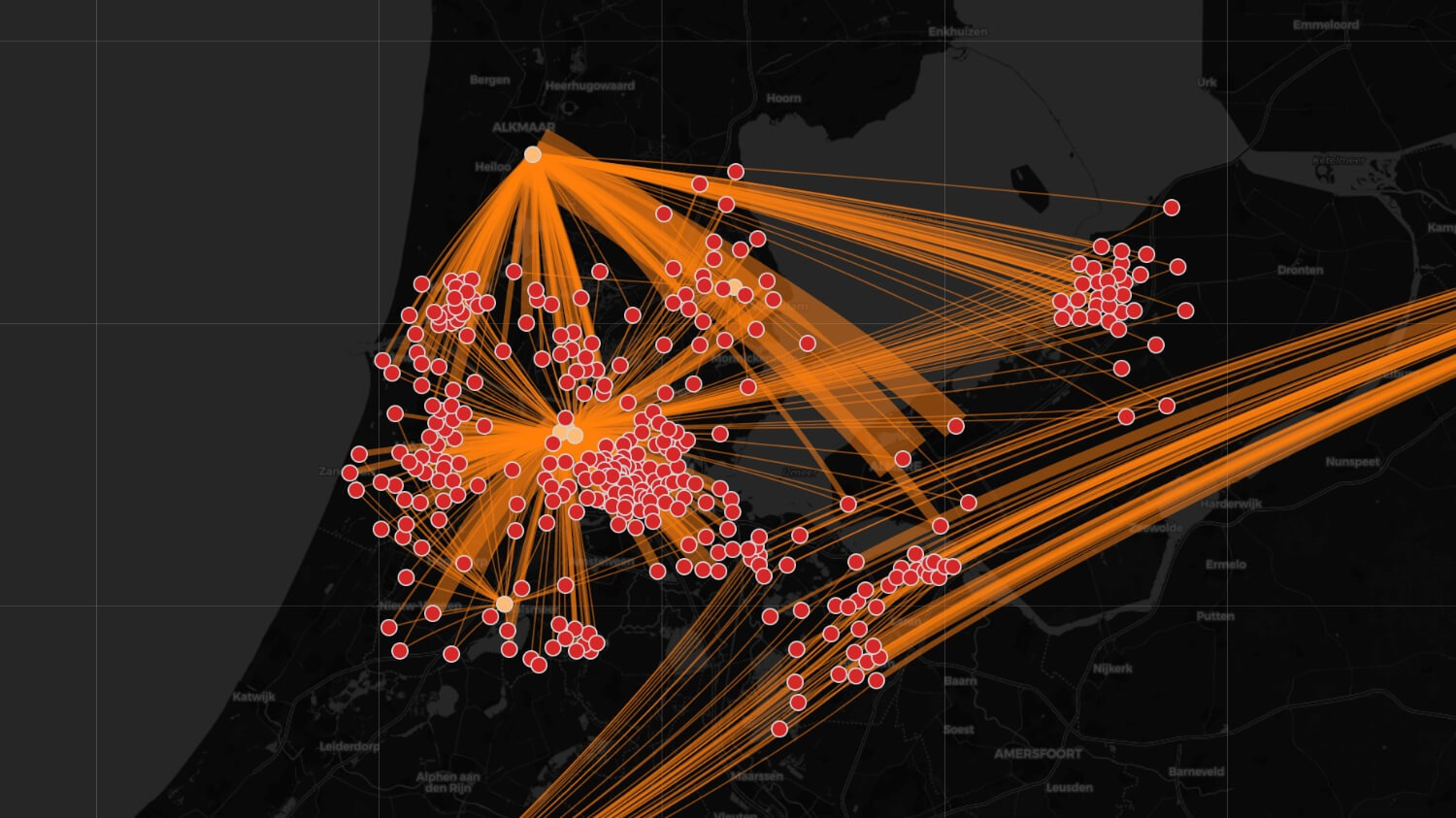A new geo-design spatial mapping tool connects waste streams to circular business opportunities, giving city authorities and urban designers the ability to turn bread into beer, sewage into roads and demolished buildings into urban mines.
TU Delft, AMS Institute, and Metabolic are working with an international consortium of parties to develop an interactive online application that maps resource flows in peri-urban Amsterdam – one of six living laboratories for the REPAiR project, funded by the European Union’s Horizon 2020 research and innovation program. The tool equips city planners and urban designers with an interactive map of waste streams and shows how they could be usefully redirected, identifying the significant opportunities in peri-urban areas where the city and the countryside meet. Detailed visualizations of food and construction waste streams illustrate the potential synergies between agriculture, residential areas, commercial operations, waste processing facilities, and unused buildings.
Our Cities Program Lead Tamara Streefland says Amsterdam’s peri-urban region has a lot going for it as a circular economy hub, but that similar tools could be developed for any urban or peri-urban region provided the right local partners get involved. “REPAiR’s interactive geo-design tool shows what activities and stakeholders are connected to what waste,” she says. “It also allows city authorities to select the right enabling context for certain solutions. They can see where certain implementations should be located to have the largest impact, and how flows are affected by certain policy or planning decisions. So if a lot of households produce food waste, for instance, then you can see where and how much can be turned into compost for surrounding farmland.”
Bread into beer
As one example, the tool will be able to map where and how much unsold bread is being thrown out at bakeries, and identify the location of nearby breweries and the amount of barley from waste bread they could use to brew beer. Making beer from waste bread is an ancient practice that has been revived in recent years by the Brussels Beer Project and the British company Toast Ale. By harnessing the power of geo-design, Amsterdam could scale-up these niche business models to make the most of the 435,000 loaves thrown away in the Netherlands every day.

Mapping out a circular economy
This is just one of hundreds of waste streams and peri-urban demands that REPAiR could join the dots on. Others include TU Delft’s vision of replacing environmentally harmful petroleum-based asphalt roads with bio-asphalt produced from micro-algae derived from sewage. Mapping which asphalt production facilities are located close enough to sewage plants of sufficient scale allows the development of efficient business cases with minimal transportation costs.
Another untapped resource is the building materials that get wasted when buildings are disassembled or demolished. To transform this into an opportunity for urban mining, we used a model developed in a separate urban mining project for building inspection company SGS Search as the backbone for spatially modelling the available resources in the MRA for REPAiR. We classified six building classes in the MRA-region based on BAG-data and calculated the occurrence and quantity of approximately 500 building elements. These building elements were then aggregated into 14 main material types: sand and soil, concrete, bricks, ceramics, glass, gypsum, steel and iron, copper, other metals, wood, paper, plastics, bitumen, and isolation material.
Metabolic sustainability consultant Martijn Kamps says this method provides an overview of the material stock in the built environment. “When cross-referencing this stock with municipal demolition plans, valuable insights are obtained on the materials that will be available in the near future,” he says. “These materials should be matched to nearby construction projects to effectively close the material cycle. Other research suggests that especially wood, isolation material and gypsum provide feasible business cases in the MRA-region.”

Peri-urban areas don’t just waste resources: they also waste space. As Amsterdam grapples with housing supply challenges, huge “wastescapes” within the Metropolitan Region of Amsterdam (MRA) are not being put to use. For example, nearly 17% of offices in the MRA in 2014 were left vacant. Spatially mapping these unused spaces and local needs could see empty commercial spaces repurposed as housing, or neighborhood or community activities such as exhibitions and university courses, to keep these spaces alive and in use.
Beyond city boundaries
The waste generated by the current economic system usually ends up out of sight and out of mind, but geo-design can paint a picture of where waste is being produced, and where it is processed. Streefland reiterates that the peri-urban region include the areas around the city; these margins are often at the center of our waste processing. She says the tool will empower city authorities to integrate resource management into their design and planning for the entire region.
“Waste processing typically happens on the margins,” she says. “So what really need to do is to stop thinking about city boundaries and start thinking about more systemic boundaries. Taking the larger system and region into regard provides the basis to really minimize our waste streams and find the synergies necessary to make the transition to a waste free economy.”
To find out more about the REPAiR project, go here. To learn more about how Metabolic can help your city transition to a more circular and sustainable state, contact Cities Program Lead Tamara Streefland at [email protected]






